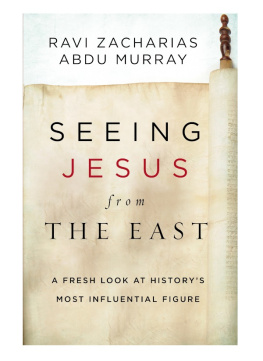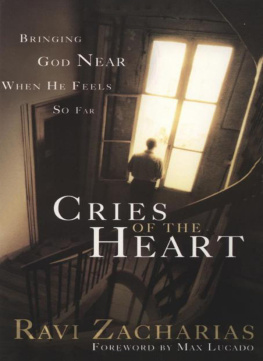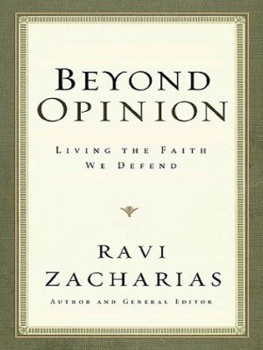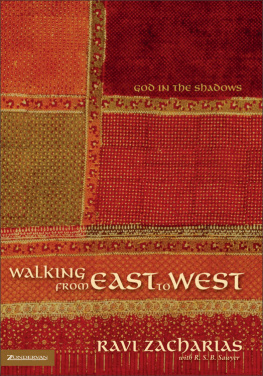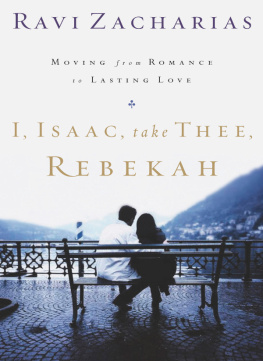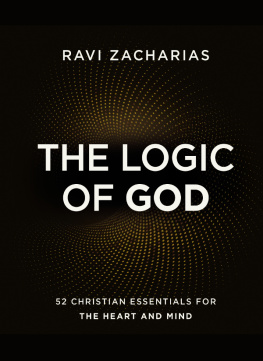What Ravi Zacharias and Abdu Murray have done in Seeing Jesus from the East is critically needed today. In the West, weve mistakenly believed that Christianity is an outmoded religion. In the East, people see Christianity as a Western religion not meant for them. In highlighting Jesus Eastern origins and his revolutionary ideas, Zacharias and Murray show that Jesus can appeal to Christians and non-Christians, seekers and skeptics, Easterners and Westerners alike.
LOUIE GIGLIO, pastor, Passion City Church, and founder, Passion Conferences
As a detective, I learned an important, foundational lesson: avoid presuppositions before beginning any investigation. Years later, when I examined the person of Jesus for the first time, I struggled to shed many of the cultural and skeptical presuppositions I held as an atheist. I wish Id had Ravi and Abdus book in those early days of my investigation. They skillfully examine Jesus in his Eastern context and then demonstrate why Jesus matters for both Western and Eastern truth seekers. This book is unique in its genre and a must-read.
J. WARNER WALLACE, Dateline featured cold-case detective, speaker, and author of Cold-Case Christianity
Seeing Jesus from the East delivers exactly what it promisesa fresh look at the most influential person of all time. Drawing from their Eastern backgrounds, Ravi Zacharias and Abdu Murray show that the gospel isnt a merely Western message, but one that crosses cultures and even centuries. I highly recommend this book.
ROBERT MORRIS, founding lead pastor, Gateway Church
As an Asian Christian, I have longed to see a book like Seeing Jesus from the East. It is seeing Christianity afresh through a non-Western lens, and thus we are wonderfully led to grasp the universal appeal and power of the gospel of Christ, regardless of culture. In a divided world, the unifying and uncompromising message in this book is something we all need.
EDMUND CHAN, founder, Global Alliance of Disciple-Making Churches
ZONDERVAN REFLECTIVE
Seeing Jesus from the East
Copyright 2020 by Ravi Zacharias and Abdu Murray
Requests for information should be addressed to:
Zondervan, 3900 Sparks Dr. SE, Grand Rapids, Michigan 49546
ePub Edition March 2020: ISBN 978-0-310-53129-6
All Scripture quotations, unless otherwise indicated, are taken from The Holy Bible, New International Version, NIV . Copyright 1973, 1978, 1984, 2011 by Biblica, Inc . Used by permission of Zondervan. All rights reserved worldwide. www.Zondervan.com. The NIV and New International Version are trademarks registered in the United States Patent and Trademark Office by Biblica, Inc .
Scripture quotations marked ESV are taken from the ESV Bible (The Holy Bible, English Standard Version). Copyright 2001 by Crossway, a publishing ministry of Good News Publishers. Used by permission. All rights reserved.
Scripture quotations marked NASB are taken from the New American Standard Bible. Copyright 1960, 1962, 1963, 1968, 1971, 1972, 1973, 1975, 1977, 1995 by The Lockman Foundation. Used by permission. (www.Lockman.org).
Any internet addresses (websites, blogs, etc.) and telephone numbers in this book are offered as a resource. They are not intended in any way to be or imply an endorsement by Zondervan, nor does Zondervan vouch for the content of these sites and numbers for the life of this book.
No part of this publication may be reproduced, stored in a retrieval system, or transmitted in any form or by any meanselectronic, mechanical, photocopy, recording, or any otherexcept for brief quotations in printed reviews, without the prior permission of the publisher.
Published in association with the literary agency of Wolgemuth & Associates, Inc .
Cover design: Studio Gearbox
Cover photo: Serge75/Shutterstock
Interior design: Kait Lamphere
20 21 22 23 24 25 26 27 / LSC / 14 13 12 11 10 9 8 7 6 5 4 3 2 1
Information about External Hyperlinks in this ebook
Please note that footnotes in this ebook may contain hyperlinks to external websites as part of bibliographic citations. These hyperlinks have not been activated by the publisher, who cannot verify the accuracy of these links beyond the date of publication.
To the memory of our dear friend and former colleague Nabeel Qureshi. He wanted so much to write this book with us, little knowing that his eyes would be seeing Jesus far better than any book can express. He is probably smiling at how little we know.
E verybody loves a story. Having covered this globe as a speaker for nearly half a century, I have noticed how the posture of a person in the audience changes when Im telling a story. Actually, this propensity starts early in life. Ive seen it both as a father and now as a grandfather. Theres never a night with the family that the little children wish to be tucked in without a story. Yet there are different attitudes in the East and the West toward the purpose of a story.
Before my arrival at an Ivy League school in the United States some time ago, there was a lot of back and forth between those who were in favor of my coming and those who were opposed. This was a result of the new tolerance in America. I normally dont read any such pro or con sentiment. However, on this occasion, one of my friends sent me an article by a leading atheist on the campus, which he thought would attract my attention.
Ravis method is all anecdotal. That was a fascinating statement in the article, and it revealed a mind-set highly conditioned by the Western critical paradigm. The statement bordered on an ad hominem, against the man, attack but was cleverly camouflaged as a methodological critique. For the sake of civility, I received it as a legitimate criticism and responded in one of my talks. I said, in essence, if I were to ask the writer of that article why he didnt believe in God, chances are one of his strongest reasons would be the problem of evil and the problem of pain. When pushed to justify his reasoning, he would resort to storytelling, using one illustration after another of atrocity or tragedy. Suddenly the stories would become the reason for his disbelief, all while he pretended that the reason made the stories.
What it boils down to is not whether an apologetic is anecdotal or syllogistic, but what place each is afforded in the powers of persuasion. Thats the heart of the issue. Both story and argument have a place, and ignoring one or the other risks the extremes of mere illustration or sterile argumentation. What this critic likely didnt realize is that his criticism of my approach, accurate or not, also criticized a whole wealth of Eastern belief systems. Almost the entire sacred text of Hinduism is a story. Much of Islams hadith are story after story. Buddhas entire authority comes from his story. But where this critic was right is that stories do need a basis for truth-testing before we draw truths from them. That is key. And it is a tough demand.
The amazing thing about the gospel of Jesus Christ is that, though it is a story, it is a story that invites tests for truth. One of the elements that attracted me to Jesus was that everything he said and taught was open to historical investigation and was incredibly supported by prophecies and by his works.
Jesus was the ultimate lawgiver and is the ultimate answer to our struggle to distinguish between truth and lies. He revealed himself in history and continues to do so in individual lives. He is the supreme doctor, lawyer, philosopher, and healer of the soul.
When I first started to read the Bible, I was surprised by how Jesus regaled his audiences with stories and startled them with unexpected endings. The ultimate surprise was the manner of his death and the power of his resurrection. His stories are so Eastern, and the endings often offer an astounding twist, even for the Easterner. Yet his arguments are also sound for the Westerner.

